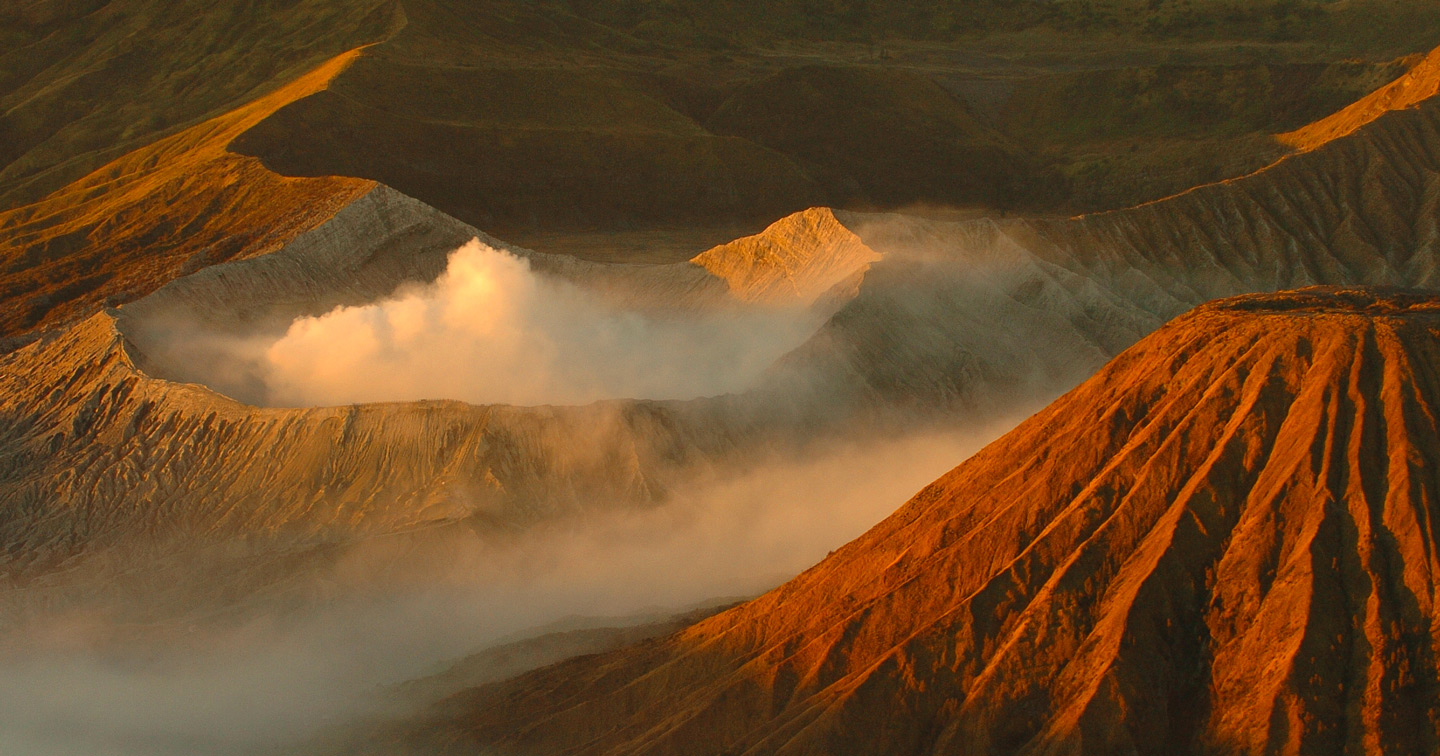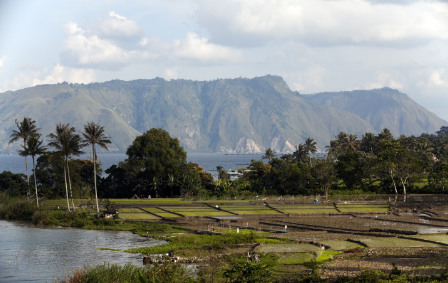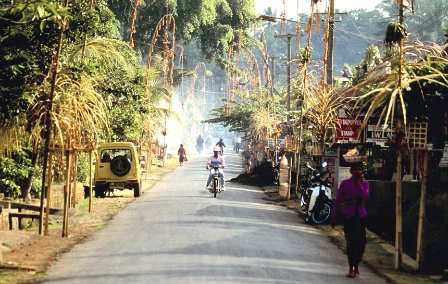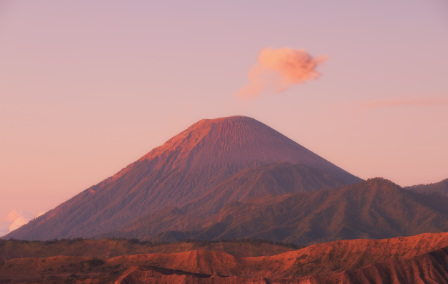Published 28th Jun. 2021
Reading time
Your first experience of Bali starts just as you leave the airport; the air is warm, maybe even welcoming, and there are smiling faces everywhere. The Balinese are open,caring and are very hospitable towards visitors, making it easy to see why so many are compelled to visit Bali and discover all that this remarkable island has to offer.
The Balinese believe they must share what they have because according to the island's tradition, its fertile land and lush vegetation do not belong to humans but to the deities and ancestors who join them. They are always in search of beauty, and dancing, painting and sculpting are as much a form of worship as prayer is; the island is an exceptional place where all the inhabitants are artists. Works are ephemeral; women weave offerings that are destined to wither while men sculpt using materials that will, at best, only last long enough to transmit their talent to the next generation. To help you delve in and discover more, we’ve compiled a list of some of the best places to visit in Bali.
When it comes to the best places to visit in Bali, the haven of Ubud is certainly up there. The island's cultural capital is a vibrant place, where modernity and tradition meet. Hotels are in keeping with this perfect mix, where comfort and refinement blend into lush jungle scenery and tropical gardens, and natural stone pools are emerald green. The luxury is in the harmony and one of the many reasons why you need to visit Bali. You can explore Ubud by bike, raft, or simply by walking from one terrace to another along the narrow edges of the rice paddies. At the heart of the village is the monkey forest, where monkeys reign as absolute masters.
Bali is the island of a thousand temples, and Ubud is home to hundreds of them. Certain festivals celebrate them all, but they also have their own specific festivals called Odalan, which is celebrated by the entire community connected to the temple. So, you'll see, at least on one occasion, processions of women carrying magnificent pyramid offerings of fruits, flowers, eggs, and broiled chicken, stacked high on their heads, as they move along to the beat of the drums. At nightfall, in most of the banjars - local neighbourhoods - men and young people play traditional Gamelan music.
While you could stay forever in Ubud, you can’t visit Bali without heading off to another version of paradise; Munduk. Found in rural Bali, Munduk has remained unchanged for decades, here the hotel's wooden terrace overlooks clove plantations from above, and the horizon is bordered by mountains which become more beautiful in the late afternoon when they take on a bluish hue. Nearby, it's easy to get lost in dense forests that are home to waterfalls, springs and natural refuges where ferns soften the light. It's an exceptionally peaceful place, perfect for some serious R&R.
Further east, there is another magical world and contender for one of the best places to visit in Bali; the Sidemen region. Here, the most wonderful rice paddies have been carved into terraces. Mount Agung, the island's highest point, is a focal point of the landscape pretty much wherever you are. Seeing it, you'll understand why the Balinese believed it was the dwelling of the gods. Locals ascribe it so much power, they even point their beds towards it, no matter where they are on the island. The most athletic can make the climb at night and reach the mountain peak by sunrise. Other activities include rafting along the river and meeting farmers in the fields and surrounding orchards. It's exceptionally easy to while away a few days here.
Head towards the sea to Besakih Temple on the slopes of Mount Agung, sitting 3,200ft above sea level. Even before the arrival of the Hindu movement, the site was deemed sacred; but since it was spared from the volcano's eruption in 1963, it has become even more revered.
Your next stop is Amed. With its dry and arid land, it's something of a departure from other Indonesian islands. Here, seaweed is the main crop. The sea laps gently at the shoreline and the multi-coloured coral beds can be seen through the crystal-clear water. The hilly route along the coast to Tirta Gangga and its water gardens are a must. You'll also see lots of processing factories dotted along the coast. Head up to Tulamben where divers can explore a shipwreck – a must visit Bali experience.
Then you'll head west to Bali Barat National Park, a nature reserve with hundreds of colourful birds. In the heart of the mangrove, you'll have front row seats watching monkeys and wild birds frolic about. This is the perfect place to live the dream of staying in beach huts by the water, paddling on a kayak on the sea and riding along the beach at sunset. We would highly recommend doing a snorkelling or diving trip off the tiny Menjangan Island. As you dive to the deep-water trench, just a few feet from the shore, you can observe depths worthy of a David Attenborough film.
It's almost time to head back. A stop along Balian Beach in Bali is essential as you head back south. The broad black sandy bay with glimmers of gold where huge dark rocks have washed up is something straight out of a Dali painting. You'd almost expect to see dinosaurs here, but the caves are home only to bats. The road heads up to Tanah Lot Temple, which is built on a tiny islet. From there, you can continue to the Bukit Peninsula in the south, with its enormous limestone cliff surrounded by white sand dune coves. It's also a really popular surfing spot. Or maybe you'll stop off in Umalas, close to Seminyak in Bali, for one last look at the mesmerising lush green rice paddies before heading back home. You'll also find some of the best restaurants, bars, and shops on the island here – yet another reason to visit Bali.
The island's name means 'chilli pepper', and it hasn't really changed in the last 30 years, with one exception - a few excellent luxury boutique hotels have cropped up. This island is becoming increasingly popular with tourists so now is the perfect time to visit Bali and its wealth of nearby spots. Close to Sengiggi, Jeeva Klui is a small hotel that prides itself on privacy. It has everything, from dazzling sunsets over the sea and Balinese volcanoes to swimming in calm water and encounters with local fishermen. Art lovers should head to Hotel Tugu, a sumptuous museum hotel designed by a great Indonesian collector. It's close to a renowned golf course (less arty) and surrounded by a long stretch of beach. The ghostly image of Mount Rinjani appears in the distance. Nearby there is also the beautiful Oberoi, the perfect place to stay if you want to take a boat trip to the Gili Islands, which are famous among divers for their astonishing seabeds.
Selong Belanak is the 'ideal' beach. Its white sand is so fine, it's almost like flour. The sea never retreats much in the bay, which stretches for more than two and a half miles. At one end, there's a fishing village called Kuta and at the other end, there's some beautiful bungalows built into a cliff. From one end to the other, you can see rocky peaks capped with yuccas. It is absolute luxury in its purest form. You can learn to surf here, and it's very safe because the bottom of the sea is like a soft sand mattress. We also recommend heading out to sea on a local fishing boat. The view before you get to Kuta is unreal: delicate golden shores lined with coconut trees, plunge into a ribbon of crystal-clear water. A few rounded islets are dotted along the horizon. The village, shops and restaurants are made of bamboo, covered in dry thatch, and sit right on the sand. As you leave the village, there are huge coconut plantations, mangroves and a few gentle hillocks, that you ride across or cross in a sidomo, a traditional cart, pulled by small horses.
Lombok is beautiful at every turn, from the coastline to the lush landscapes to the people. The place is synonymous with the Rinjani volcano, the birthplace of the goddess Anjani and is easily one of the best places to visit in Bali and the Balinese and Sasak agree, considering it to be a sacred site. We can organise a three-day hike around the volcano, which is physically challenging but well worth it as part of your visit to Bali. Stunning landscapes follow on from seas of clouds. The huge lake in the caldera is an emerald set in a rocky cove. Hot springs supply the natural pools. Rinjani is also a very spiritual place; one of the natural pools is known for having healing powers, and caves that are perfect for a spot of meditation.
Lombok is an excellent place to get back to nature, and there is wildlife at every turn. It's hard not to get attached to each region, and it's even harder to tear yourself away from it. Unless you're sure you're going to come back to visit Bali again...
Each one is a gem forgotten by tourists but blessed by the gods. It's best to explore the islands with a guide because English is not widely spoken here. Unless you visit them on a cruise in a magnificent Phinisi, a long wooden ship built by the Bugis, although you may have to compromise on the comfort that Bali and Lombok have to offer.
Off the island of Flores, Komodo National Park is home to islands with exceptional seabeds and white sandy beaches. Most importantly, it is home to komodo dragons, which can measure more than ten feet long, jump six-and-a-half feet and outrun a goat. To track down this remarkable creature, you'll dock on the island of Rinca where, accompanied by a guide armed with a forked staff, you'll walk through the savannah. After the thrill of meeting this ancient creature, you'll stop at Komodo's famous Pantai Merah.
The beaches here have soft pink sand while the sea drops to incredible depths just a few feet off the shore.
You'll then return to Flores, where the diversity of the landscapes is extraordinary and another on the list of best places to visit in Bali. White and black sand coves and even blue pebble beaches are sprinkled along its coastlines. There are more surprises inland. Surrounding Ruteng, the rice fields are the only ones of their kind in the world, cutting through the valley like giant spider webs. A stunning hiking trail leads to Wae Rebo, a village in Manggarai village. You'll sleep in the tribe's round huts, with roofs that almost reach the ground. The island is overwhelmingly Catholic, but the religion brought here by Portuguese missionaries coexists and mixes with ancestral worship. They live with the deceased, and graves sit adjacent to houses in the urban areas. In the villages of Ngada, the hat-shaped roofs are spread out on all sides of a central square. This is where ritual ceremonies take place. The Ngadhus, large thatched umbrellas, are a symbol of masculinity; they face the Bhagas, miniature houses that are a symbol of femininity. Behind them, megalithic buildings neighbour gravestones topped with crosses. The route winds up towards Moni. Women carrying wicker baskets appear out of nowhere from the mist swirling the villages. It's cool here, and the village is a stop on the way to Kelimutu volcano.
It's then time to sail to Sumbawa. Sumbawa is well-known for its beautiful beaches and surfing spots. But the Dou Donggo culture, Neolithic remains, and volcanic landscapes are also worth exploring. Its neighbouring island, Sumba, the Island of Horses, has dry, arid land. Here, the villagers still carry swords on their belts. Their funeral rituals earn them the title of modern megaliths. These former warriors take part in a big festival called Pasola, once a year. It involves members of opposing clans competing on horseback. Each of the Sunda islands gives you a taste for adventure, so why not continue exploring on Irian Jaya? In the Baliem Valley, the Papuans await with smiles across their faces, dressed only in their pouches.
By
Sandrine Soimaud

While Indonesia is (quite rightly) a tourist magnet, you can explore a side of the islands that often goes unseen with our team’s insider knowledge and connections. That might come in the form of an eco-snorkelling tour in Lombok, guided by fishermen who previously worked in the shark-fishing industry. Our savvy in-country Concierges are just a WhatsApp away, eager to recommend their favourite tried-and-tested experiences. We’ll even take the admin out of travel by arranging e-visas and the Bali Tourist Tax before you go, so you can enjoy Indonesia’s rice terraces, temples and beaches in peace.
ENQUIRE NOWPractical advice and inspiration for your next trip

Sumatra is one of the largest and most beautiful islands in Indonesia; it's three times the size of the UK and, unlike its neighbouring islands of Bali and Java, sees far fewer tourists. It's also one of the most biodiverse areas on earth, known for its extraordinarily rich flora, fauna and wildlife. Want the lowdown? Read on to discover our reasons why you should visit Sumatra. 1. Step into the unknown2.
7th June 2025 - Indonesia Adventure

Small but mighty, Central Java is renowned for its cultural traditions, ancient temples and lush landscapes. From lofty volcanoes and cascading waterfalls to sprawling tea plantations and elaborate monuments, there’s plenty to pack into 24 hours in Central Java. If you’re worried you’ll be short on time, fear not. Our clued-up local Concierges are the ultimate insiders and can handpick the top experiences for you.
19th February 2025 - Indonesia 24 Hours In

September’s beautiful blue skies and toasty temperatures make it an excellent time to visit Indonesia. With the summer crowds dwindling, you can enjoy the country’s awe-inspiring scenery (think active volcanoes and clear waters) and learn about its cultural heritage (we’re talking captivating temples and traditional dances). Need more convincing? Read on for our roundup of reasons to visit Indonesia
9th January 2025 - Indonesia Travel Inspiration

Our team of destination experts will get to know you and your unique requirements for your holiday

We work with you to build an ultra-personalised holiday itinerary with your choice of accommodation, experiences and activities

All of our holidays include little extras designed to make a big difference to your trip, from fast-tracking you through airport check-in and security to our network of local Concierges